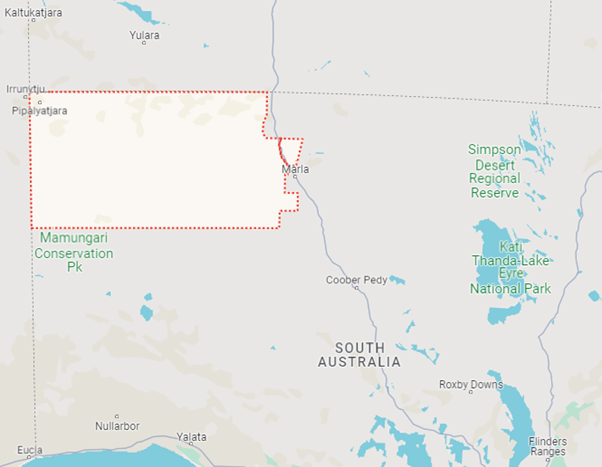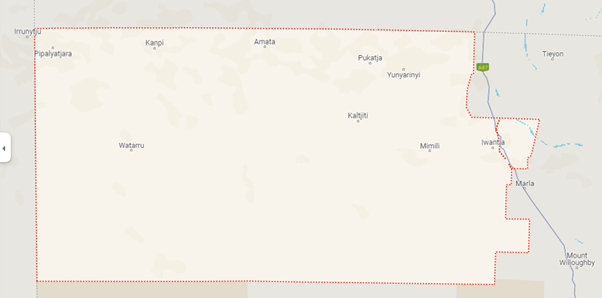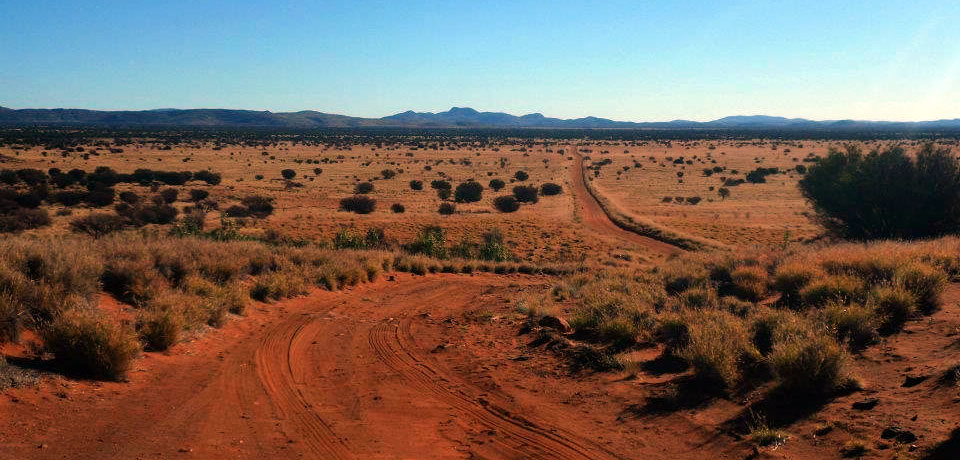APY Lands
APY Lands
Anangu Pitjantjatjara Yankunytjatjara lands cover 103,000 square kilometres in the north-west of South Australia – about 10.4% of the state. A vast area in the northern part of the Great Victoria Desert region which includes the Musgrave Ranges. Established in 1981 as an area of native title, some of these ancient lands were once part of several pastoral leases. Population is about 2,300 people.
Permits are now needed to enter these lands unless one is indigenous. Deals have been done for oil and mineral exploration and mining. Pastoral use is being considered. Feral animal management is also being considered, for camels, donkeys and horses.
Rangers are employed by the APY Lands. The Administration is at Umuwa, which is south of Pukatja. The eight main communities are Iwantja (Indulkana), Mimili (Everard Park), Kaltjiti (Fregon), Pukatja (Ernabella), Amata, Pipalyatjara, Umuwa and Watarru.
Horses of the area roam over vast arid areas. There may be slightly different genetics in differing areas due to the size of the terrain causing a certain amount of genetic isolation. All are remnant station horses, explorer’s horses and miner’s horses; primarily station horses. It’s probable there is no or very little outside influence genetically since horse days, that is for about 70 years or so. The further west one goes the safer should be the genetics from genetic pollution.
We know from DNA testing for example, that in the Laverton area on the western edge of the Great Victoria Desert, Mt Weld foundation horses are a discrete group, genetically different to horses from Central and Eastern Australia. Of interest regarding the spread of genetics in Central Australia is this anecdotally from Debi Robinson (whose great grandparents settled The Garden Station in c1905): “The area which is now Alice (not the telegraph station) was a large valley used as the ‘Common’. It was notorious for all the stock in there were pretty much at liberty to wander off in any direction. I’d heard that just about everyone knew everyone else’s horse, camel, goat or whatever and were identified within hours… a lot of thievery happened and most owners were days, weeks or months away to pay any fines and or to collect. They were not always branded. Stockman out of work knew a good horse and made good money if they returned to homeland with a mob.”
The horses that went into the APY Lands area were some of the best Walers raised in Central Australia. They came from Lambina Station, Todmorden, Eringa, Ernabella, Welbourn Hill and others on the eastern, south-eastern and north-eastern areas. All these stations bred for the India trade. Jim Robb of Lambina used a lot of top-quality Thoroughbreds, he also used draught, aiming for a quarter draught for his artillery horses. Sir Sidney Kidman of Eringa worked his way up from nothing to become the biggest landowner in the world, a true cattleman and horseman.
The others also liked TB’s as bush racing was the annual highlight on stations. The TB then being stayers and very few being studbook animals with the exception of Robb’s and a few others which will be mentioned by name, as there’s a chance of DNA links. Pistol marks from the many stallion sons of Pistol, himself a son of the immortal Carbine for example, still seen on some of the horses of the greater area. These take the form of white hairs, sometimes in small groups, about the rump and flanks, and often light hairs either side of the tail, dock area. Robb used so much Carbine blood there should be links to this day. Pistol had a white sock on the off hind. Carbine had a white half stocking on his off hind.
Ernabella was a set up as mission station in 1936. Purchased by the Presbyterian Church from the government for 10,000 pounds – funded primarily by subscription fund raising and with a 1000 pound government grant. Ernabella remained with the indigenous people although run by the church, and was conjoined to 65,700 square miles reserved by the government for the indigenous people there – being the Great Victoria Desert. When the government Aboriginal Protector T. Strehlow stayed there soon after, he said the local Aboriginals were excellent stockmen, as well could track horses easily in wild country so they could be mustered and brought back horses and cattle when they’d strayed to neighbouring stations.
Horses had been taken there from nearby stations, strayed there from those stations, and some were there from usual causes being strays or abandoned horses from various explorers, hopeful miners, drovers, telegraph line parties on the Stuart Highway to the east and stock routes. Doggers went through the area often as there were water points, at times they too left or had a horse stray. Some came from W.A. area, some from the N.T., some via Oodnadatta – doggers were paid by presenting the scalps to a police station.
Many horses were left behind when Granite Downs, Indulkana and Moorilyanna stations – all APY lands now – were deserted due to prolonged drought; they were deserted by 1933. Mich O’Donohue had been on Granite Downs, and after sinking twenty one bores only found a bit of water in three, that and drought and dingoes saw him move to the Everhard Ranges. Granite Downs was taken up again a bit later, Jim Robb adding it to his Lambina holdings during the 1930’s and running sheep but primarily cattle and horses there, people named Draper there 1940’s and Mr Pope was the head stockman. James Davey had the station in the 1950’s. Waterholes for stock had been dug, and water could be reached two feet down in some old creek beds. These stations had very good horses.
Theft was common in the bush. In 1939 Jim Smith of Mount Irwin Station was charged with stealing cattle including good Nalpa bulls (prize stud shorthorns) from Kenmore Park, Granite Downs, Todmorden and Macumba. In 1943 Jack Giles from Welbourn Hill was charged with stealing and branding Granite Downs calves, the station then owned by Jim Robb. Due to no boundary fences over the vast area, this sort of thing was common. In 1948 the leasee of Granite Downs, Jim Davey, charged by Mollie Breaden of Todmorden for having stolen and branded some of her horses. There were 1,000 horses on Todmorden that year. Thus horse genes were spread this way too, some taken hundreds of miles.
Granite Downs was set up by Frank Way in the 1880’s, then he moved to Indulkana where in 1925 he sunk a well down 110 feet, which gave 10,000 gallons of water, which watered 900 cattle and made the station viable. His horses worked stock in the toughest of areas. They sold very well too. He then sunk the wells and bores of Indulkana.
Indulkana horses were highly praised for decades, it had a good well sunk there for stock too. Granite Downs horses too, and in its heyday there was even a grandstand there to watch the bush races.
Shirley Well station was 42 miles/60 kilometres from Ernabella, a good well was put in there near Officer Creek on an existing bore site, but in 1939 Mr and Mrs Brown there were killed when the roof of their underground bedroom caved in. Shirley Well also had good stock horses, Harry Brown primarily making his living from dog scalps and using packhorses.
In 1933 100 square miles of the Musgrave Ranges, north of Ernabella, was taken up by S. Ferguson, putting him among the furthest west settlers, although P. DeConlay and V. Dumas were 20 miles further west again, calling their property Ups and Downs. All needed to sink bores and/or wells to obtain permanent water for stock.
Fregon (Kaltjiti), once an outstation and not far from Shirley Well, was named for a Mr Fregon who donated a large sum for the indigenous people to put in a bore. It was set up in 1960 as a cattle station and to train people in the cattle industry. It flourished, going from a few hundred to over 7,000 cattle. In 1980 however the cattle enterprise was abandoned due to TB decimating the herds. Needless to say they had excellent stock horses.
From Oodnadatta the traveller went through Todmorden, the Breaden’s property run for many years by Mollie Breaden, then through Lambina, Jim Robb’s place; through Everard Park now Mimili, established 1920’s, through Evelyn Downs, sold by John Bolt to Ben Walkington 1930’s, Ben had 400 cattle and 300 horses there and it’s now a nature reserve owned by Bush Heritage Australia, bordering Mount Willoughby; through Kenmore then Ernabella. All bred sheep and/or cattle, cattle bring the main livestock, and horses for the India trade. Top quality horses.
From Alice Springs the traveller to Ernabella went through Hermannsburg Mission, they too had outstanding horses, most of the artillery type. Hermannsburg was founded in 1877 with 17 cattle and 33 good work horses from Bethany, South Australia.
It only needs to be borne in mind that by 1900 there were many wild horses in all these areas. So as well as stations such as Lambina and Todmorden bringing in the odd Thoroughbred, draught stallion etc, many didn’t need too. Even those places that bought stallions, almost never bought mares but used station mares. Thus one can see how a breed comes about from horses bred in and adapted to the country for generations.
The outstanding traits of all the horses of the area is that they survived unassisted in the most harsh of conditions. Found their own water and feed in arid country. Developed wisdom and strength, good bone, hard hooves. The input of earlier horses there such those of Alfred Giles which had a lot of Timor Pony and Roadster blood. Draughts were also used there, so the melting pot resulted in a tough hardy, good natured horse.
The location and communities of the APY lands are shown on the maps below. The Stuart Highway that runs from Port Augusta to Alice Springs, is on the right. There are about thirteen communities in total, if one goes to Google maps and zooms in they may be seen.


